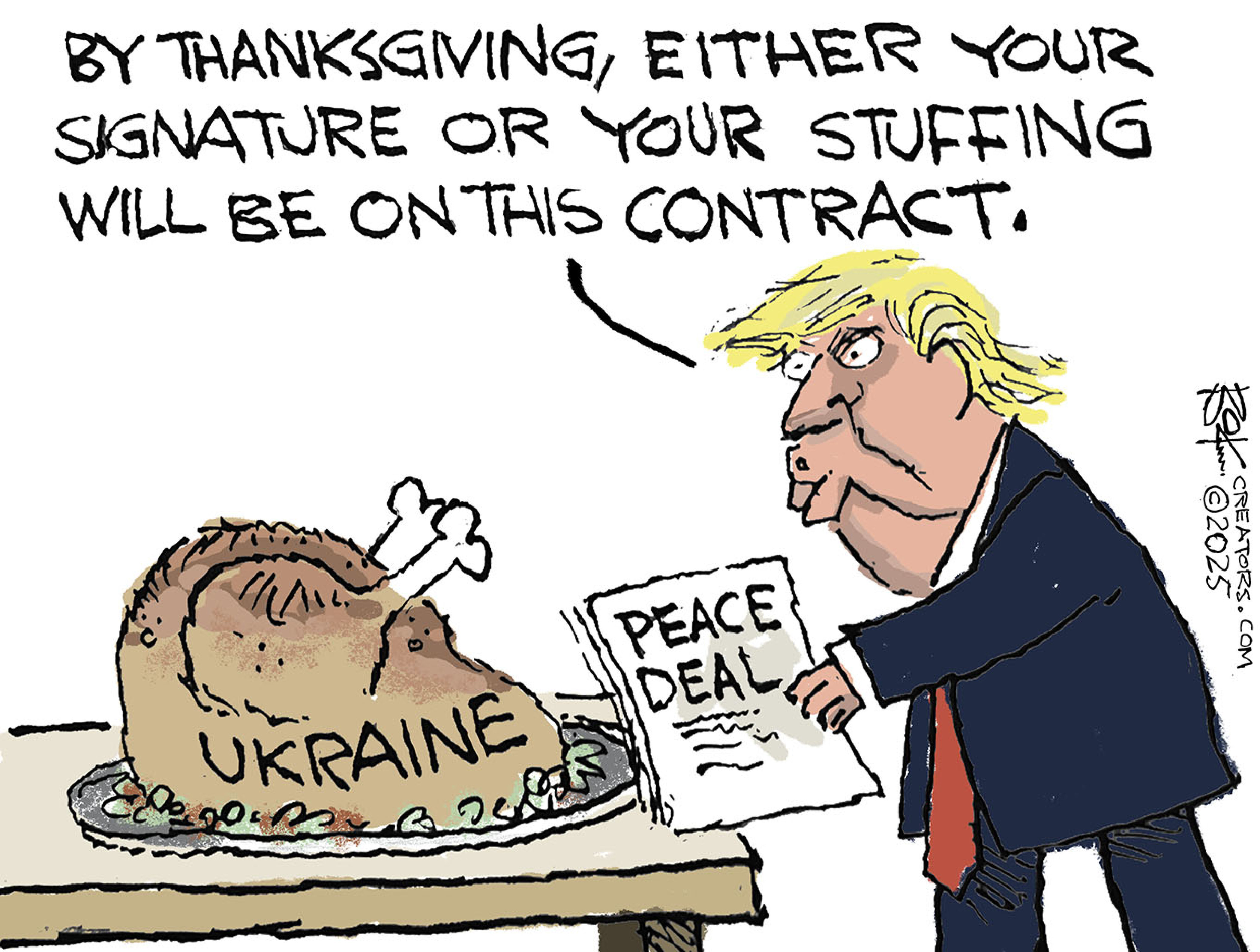'The little dog lost at sea'
Author Shankar Vedantam explains why the saga of a shipwrecked pet tugs our hearts more than a distressed nation of millions.
On MARCH 13, 2002, a fire broke out in the engine room of an oil tanker about 800 miles south of Hawaii. The fire moved so fast that the Taiwanese crew did not have time to radio for help. Eleven survivors and the captain’s dog, a terrier named Hokget, retreated to the tanker’s forward quarters with supplies of food and water.
The Insiko 1907 was supposed to be an Indonesian ship, but its owner had not registered it. In terms of international law, the Insiko was stateless, a 260-foot microscopic speck on the largest ocean on Earth.
Now it was adrift. Drawn by wind and currents, the Insiko got within 220 miles of Hawaii. It was spotted by a cruise ship, which rescued the crew. But as the cruise ship pulled away, a few passengers heard the sound of barking.
The Week
Escape your echo chamber. Get the facts behind the news, plus analysis from multiple perspectives.

Sign up for The Week's Free Newsletters
From our morning news briefing to a weekly Good News Newsletter, get the best of The Week delivered directly to your inbox.
From our morning news briefing to a weekly Good News Newsletter, get the best of The Week delivered directly to your inbox.
The captain’s dog had been left behind on the tanker.
A passenger who heard the barking dog called the Hawaiian Humane Society in Honolulu. The animal-welfare group routinely rescued abandoned animals—675 the previous year—but recovering one on a tanker in the Pacific Ocean was something new. The Society alerted fishing boats about the lost tanker and soon media reports began appearing about Hokget.
Something about a lost dog on an abandoned ship in the Pacific gripped people’s imaginations. Money poured in to fund a rescue. Donations eventually arrived from 39 states and four foreign countries. One check was for $5,000. “It was just about a dog,” Pamela Burns, president of the Hawaiian Humane Society, told me. “This was an opportunity for people to feel good about rescuing a dog. People poured out their support. A handful of people were incensed. These people said, ‘You should be giving money to the homeless.’” But Burns thought the great thing about America was that people were free to give money to whatever cause they cared about, and people cared about Hokget.
The problem with a rescue was that no one knew where the Insiko was. The U.S. Coast Guard estimated it could be anywhere in an area measuring 360,000 square miles. Two Humane Society officers set off into the Pacific on a tugboat called the American Quest. The Society paid $48,000 to a private company called American Marine to look for the ship. Air, sea, and high-tech surveillance equipment were all pressed into service. With each passing day, the calls from around the world intensified: Had Hokget been found?
A free daily email with the biggest news stories of the day – and the best features from TheWeek.com
The U.S. Coast Guard had said it could not use taxpayer money to save the dog, but under the guise of training exercises, the U.S. Navy began quietly hunting for the Insiko. Letters and checks to the Humane Society continued to pour in: “This check is in memory of the little dog lost at sea.” “Thank you for pulling my heartstrings and for reminding me of all the hope there is left in this world.”
On April 9, a window of hope opened when the crew on a Japanese fishing boat reported seeing something that looked like the Insiko drifting in the direction of Johnston Atoll, an uninhabited U.S. territory. Two fishing vessels eventually reached the ship. But when the fishermen tried to rescue Hokget, the dog fled below decks in the direction of the engine room. The rescuers couldn’t follow. The fire had rendered much of the Insiko too dangerous.
Rusty Nall, vice president of American Marine Corp., wasn’t ready to drop the chase. Nall felt like giving up, but when he went home each night, his 9-year-old daughter would ask, “Did you find the doggie, Daddy?” Nall would come back to work the next day and press on.
THE STORY OF Hokget is touching. Human beings from around the world came together to try to save a dog. The vast majority of people who sent in money would never personally see Hokget. It was, as Pamela Burns suggested to me, an act of pure altruism and a marker of the remarkable capacity human beings have to empathize with the plight of others.
There are a series of disturbing questions, however: Eight years before the Hokget saga began, the same world that showed extraordinary compassion for a dog sat on its hands as hundreds of thousands of human beings were killed in the Rwandan genocide. The 20th century reveals a shockingly long list of similar horrors that have been ignored by the world as they unfolded. Why have successive generations done so little to halt suffering on such a large scale?
The philosopher Peter Singer once devised a dilemma that highlights a central contradiction in our moral reasoning. If you see a child drowning in a pond—and you would ruin a fine pair of shoes worth $200 if you jumped into the water—would you save the child or save your shoes? Most people react incredulously to the question; obviously, a child’s life is worth more than a pair of shoes. But if this is the case, Singer asked, why do large numbers of people hesitate to write checks for $200 to a reputable charity that could save the life of a child halfway around the world—when there are millions of children who need our help?
The answer is that our moral responsibilities feel different in these situations; one situation feels visceral, the other abstract. We feel personally responsible for one child, whereas the other is one of millions who need help. Our responsibility feels diffused when it comes to children in distant places—there are many people who could write that check.
But distance and diffusion of responsibility do not explain why we step forward in some cases. Why did so many people feel an abandoned dog on a stateless ship in international waters was their problem?
I want to offer a disturbing idea. The reason human beings seem to care so little about mass suffering and death is precisely because the suffering is happening on a mass scale. The brain is simply not very good at grasping the implications of mass suffering. Americans would be far more likely to step forward if only a few people were suffering or a single person were in pain. Hokget did not draw our sympathies because we care more about dogs than people; she drew our sympathies because she was a single dog lost on the biggest ocean in the world. Our hidden brain—my term for a host of unconscious mental processes that subtly bias our judgment—shapes our compassion into a telescope. We are best able to respond when we are focused on a single victim.
We don’t feel 20 times sadder when we hear that 20 people have died in a disaster than when we hear that one person has died, even though the magnitude of the tragedy is 20 times as large. We can reach such a conclusion abstractly, in our conscious minds, but we cannot feel it viscerally, because the hidden brain is simply not calibrated to deal with the difference between a single death and 20 deaths. But the paradox does not end there. Even if 10 deaths do not make us feel 10 times as sad as a single death, shouldn’t we feel at least twice as sad? There is disturbing evidence that shows we may actually care less. I suspect that if the Insiko had been carrying 100 dogs, many people would have cared less about their fate than they did about Hokget. One hundred dogs do not have a single face, a single name, a single life story around which we can wrap our imaginations and our compassion.
The evidence for what I am going to call the telescope effect comes from a series of experiments. Psychologist Paul Slovic of the University of Oregon asked two groups of volunteers shortly after the Rwandan genocide to imagine they were officials in charge of a humanitarian rescue effort. Both groups were told their money could save 4,500 lives at a refugee camp, but one group was told the refugee camp had 11,000 people, whereas the other group was told the refugee camp had 250,000 people. Slovic found that people were much more reluctant to spend the money on the large camp than they were to spend the money on the small camp.
Intrigued, Slovic pressed further. He asked different groups of volunteers to imagine they were running a philanthropic foundation. Would they rather spend $10 million to save 10,000 lives from a disease that caused 15,000 deaths a year, or save 20,000 lives from a disease that killed 290,000 people a year? Overwhelmingly, volunteers preferred to spend money saving the 10,000 lives rather than the 20,000 lives. Rather than tailor their investments to saving the largest number of lives, people sought to save the largest proportion of lives among the different groups of victims.
We respond to mass suffering in much the same way that we respond to most things in our lives. We fall back on rules of thumb, on feelings, on intuitions. Our empathic telescopes are activated when we hear a single cry for help—the child drowning in the pond, the dog abandoned on an ocean. When we think of human suffering on a mass scale, our telescope does not work, because it has not been designed to work in such situations. Humans are the only species that is even aware of large-scale suffering taking place in distant lands; the moral telescope in our brain has not had a chance to evolve and catch up with our technological advances. Our conscious minds can tell us that it is absurd to spend a boatload of money to save one life when the same money could be used to save 10. But in moral decision-making, it is the hidden brain that usually carries the day.
AFTER WOULD-BE rescuers from two fishing vessels frightened Hokget below decks, the effort to save the dog continued. There was talk of dispatching the U.S. Navy to sink the Insiko as a way of ensuring that any release of hazardous materials would occur hundreds of miles from shore. This, of course, would kill the dog—assuming it was still alive. Facing intense public pressure to save Hokget, government officials concluded that asking the Navy to sink the tanker—750 miles from Hawaii and drifting away from the distant U.S. mainland—posed unacceptable environmental risks. The Coast Guard finally agreed to access $250,000 in U.S. taxpayer funds to recover the Insiko. It wasn’t officially called an animal-rescue effort. Instead it was authorized under the Oil Spill Liability Trust Fund, based on the argument that if the aimless Insiko managed to drift westward for 250 straight miles, it might run aground on Johnston Atoll and harm marine life.
The American Quest was called up again—this time funded by taxpayers—to rescue Hokget. On April 26, nearly a month and a half after the dog’s ordeal began, the tugboat’s crew found the Insiko and boarded the tanker. Hokget was still alive, hiding in a pile of tires. Brian Murray, the American Quest’s salvage supervisor, simply walked up and grabbed the terrier by the scruff of her neck. The dog, terrified, shook for two hours. Her rescuers fed her, bathed her, and applied lotion to her sunburned nose.
Hokget arrived in Honolulu on May 2 and was greeted by crowds of spectators, a news conference, banners welcoming her to America, and a red Hawaiian lei. After a period in quarantine, Hokget was adopted by a family that lives outside Honolulu. When last heard from, she had put on weight and was signed up for dog classes.
From the book The Hidden Brain ©2010 by Shankar Vedantam. Excerpted by permission of Random House Group, a division of Random House Inc. All rights reserved.
-
 ‘Chess’
‘Chess’feature Imperial Theatre, New York City
-
 Political cartoons for November 26
Political cartoons for November 26Cartoons Wednesday's political cartoons include a peace deal for Ukraine, constitutional oaths, and the I.R.S. explained
-
 Vaccine critic quietly named CDC’s No. 2 official
Vaccine critic quietly named CDC’s No. 2 officialSpeed Read Dr. Ralph Abraham joins another prominent vaccine critic, HHS Secretary Robert F. Kennedy Jr.